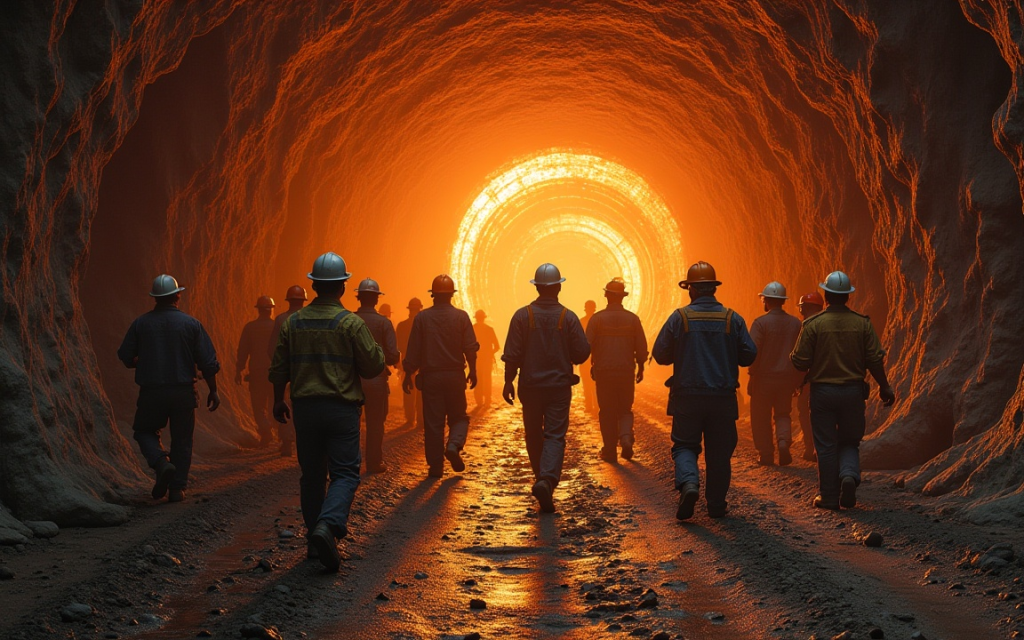Despite government’s attempts at diversification, the trend of increasing market concentration has persisted over the last year.
The processing sector demonstrates this trend significantly, with China leading production for 19 of the 20 minerals analysed by the International Energy Agency.
China holds a market share exceeding 35% for these minerals, averaging 70%.
In the ongoing trade dispute, China has employed a significant leverage: limiting the export of rare earth elements.
“There is a risk that Beijing will not leave it at that, but – should trade tensions increase – will also hinder the export of other important commodities, which could severely affect global supply chains,” Thu Lan Nguyen, head of FX and commodity research at Commerzbank AG, said in a report.
Industrial metals
Copper and nickel face a less severe situation than critical minerals.
China holds a 44% market share in copper. For nickel, where Indonesia is the leading producer, the top producer’s market share is approximately 43%.
However, mine production is problematic for these metals, Nguyen said.
According to the IEA, market concentration in this area is likely to increase further by 2035.
“One reason for this is that the hurdles for market entrants are very high, not least due to the significant capital costs,” Nguyen added.
Projects from new producers face approximately 50% higher costs. Additionally, the significant decrease in nickel prices has resulted in numerous mine closures.
Mine production to lag
The IEA indicates that challenges extend beyond diversification.
For copper, long-term mine production is projected to significantly lag behind demand.
By 2035, the IEA projects a supply shortage of approximately 30%.
This deficit is attributable to substantial market entry barriers, compounded by the challenging present economic climate for existing producers.
Currently, the global copper market has a sufficient supply, according to data from the International Copper Study Group.
The supply surplus was 138,000 tons last year and is projected to increase to 289,000 tons this year.
“This is dampening current copper prices and is not exactly making investment in new projects any more attractive,” Nguyen said.
Concurrently, copper ore quality is decreasing in current mines, posing a challenge for mine producers.
“Combined with the fact that new mining projects take around 17 years from discovery to production, the industry is facing a significant supply shortage in the future due to a lack of raw material,” Nguyen noted.
Solutions
Addressing the challenges of mine production remains a major hurdle.
A key element, as suggested by the IEA, could be increased government support.
However, market forces, such as increased demand for sustainably produced ‘green’ metals, could contribute to diversification.
The lack of a clear differentiation between low-emission, ESG-compliant metals and conventionally produced metals is a current issue.
Australian metal producers are urging the London Metal Exchange (LME) to establish a “green premium.” This initiative would enable them to diversify their product offerings to customers.
“This would enable these companies to differentiate themselves more strongly from producers in China or (in the case of nickel) Indonesia, for example, and establish their own market for their products, which focus on ESG compliance and are therefore more cost-intensive,” Nguyen said.
The LME has announced it is considering the implementation of a green premium.
Secondary production
Given the sluggish expansion of mine output, especially in copper extraction, recycling and reuse might gain greater significance.
Innovations can boost recycling rates, according to the IEA. In the previous year, 17% of the total copper demand was met by secondary production.
The IEA projects that the proportion of copper supplied by recycled scrap could reach nearly 35% by 2035, contingent upon the implementation of strategies aimed at improving copper scrap collection rates.
The EU is contemplating trade policies aimed at boosting its domestic secondary production by enhancing the availability of scrap metal.
A key aspect of these considerations is likely to be the imposition of restrictions on exports of metal scrap, which have seen a considerable rise in recent years.
Nguyen added:
However, doubts remain as to whether these measures will be sufficient to cover long-term demand, particularly for copper. The risk of a significant price increase remains correspondingly high here.
The post How copper market remains vulnerable to supply chain concentration appeared first on Invezz



